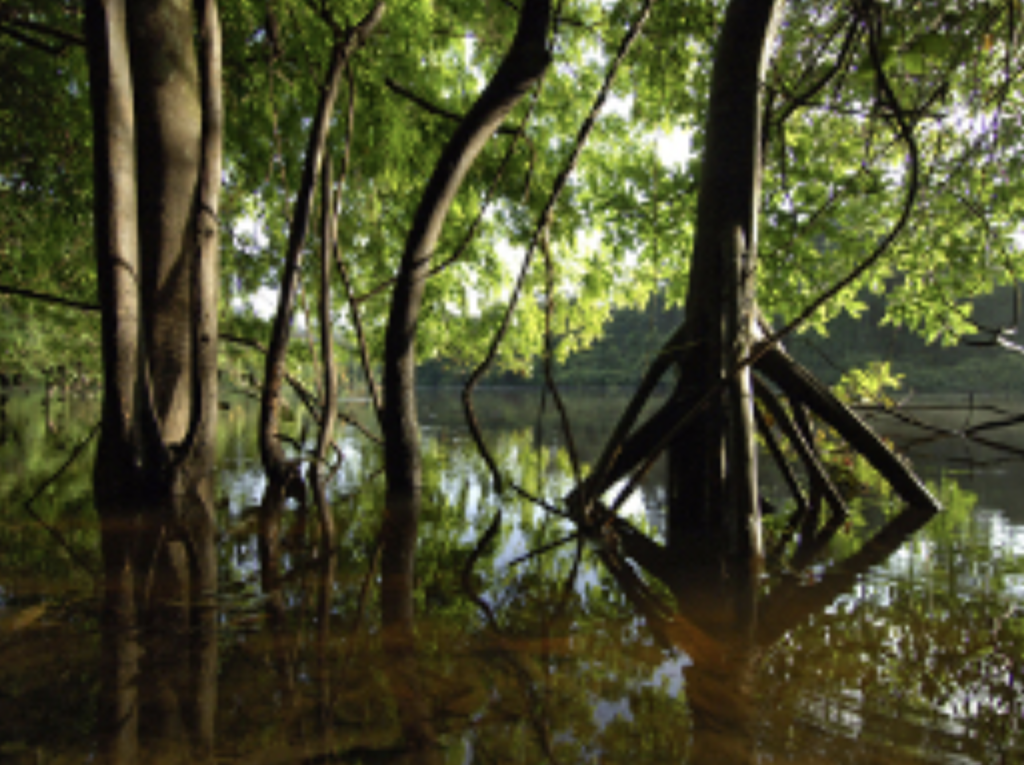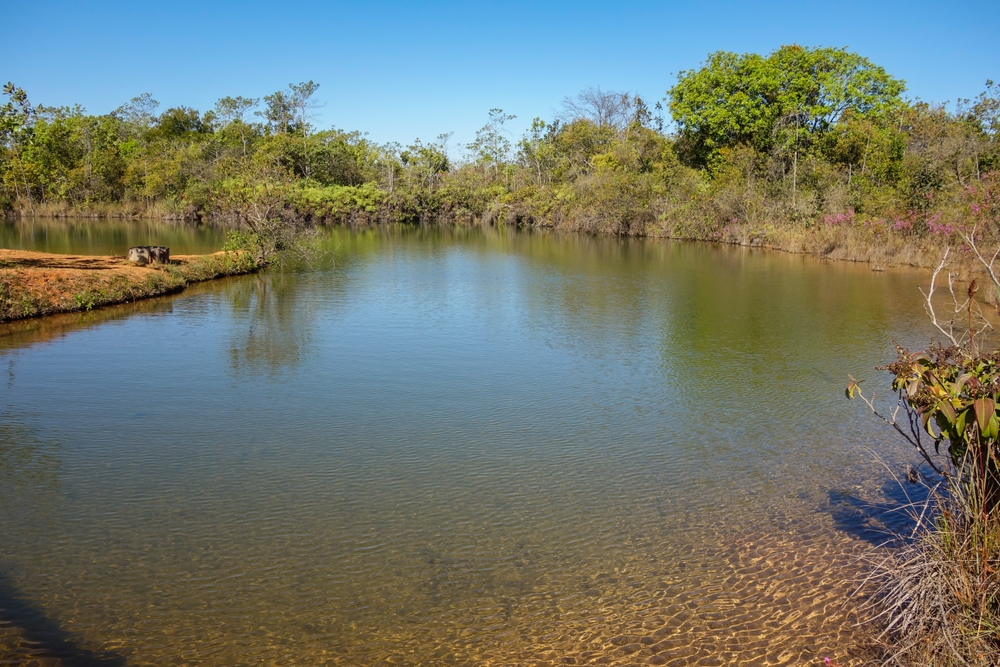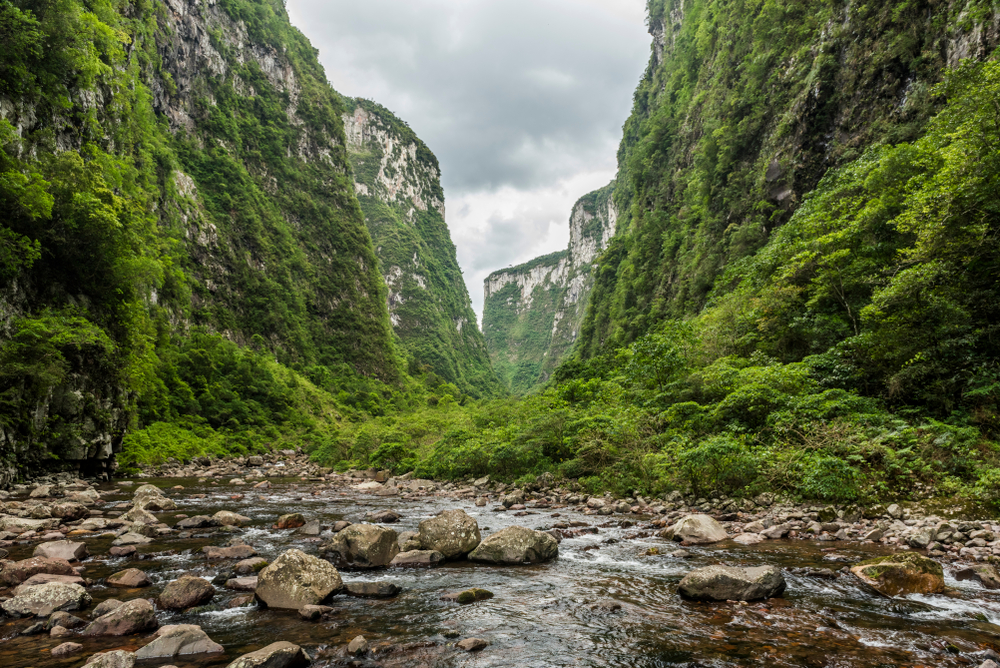Chapada Diamantina Overview
Chapada Diamantina National Park, known as Parque Nacional da Chapada Diamantina in Portuguese, is located in the state of Bahia, Brazil. Covering approximately 586 square miles (1,520 square kilometers), the park is a striking expanse of rugged mountains, deep valleys, extensive cave systems, and cascading waterfalls.
The region is defined by its high plateaus, dramatic cliffs, and flat-topped mountains, remnants of ancient geological formations. Among the most famous features are the towering Morro do Pai Inácio, which provides breathtaking panoramic views, and the stunning Cachoeira da Fumaça, one of Brazil’s highest waterfalls, plunging 1,100 feet (340 meters) into a misty abyss.
Rivers carve through deep canyons, forming natural pools such as the inviting blue waters of Poço Azul and Poço Encantado, where sunlight illuminates submerged rock formations in an ethereal glow.
The park’s diverse ecosystems include dense Atlantic Forest patches, caatinga shrublands, and extensive cerrado grasslands, creating a unique blend of flora. Orchids, bromeliads, and carnivorous plants thrive in the rocky highlands, while the valleys and forests are home to towering trees and endemic plant species.
Chapada Diamantina hosts a rich variety of wildlife, including elusive mammals like jaguars, ocelots, and giant anteaters. Capuchin and howler monkeys move through the treetops, while armadillos and tapirs navigate the undergrowth. The avian diversity is remarkable, with the park serving as a sanctuary for the brilliant blue-and-yellow macaws, harpy eagles, and the endangered Lear’s macaw. Hummingbirds flit among vibrant flowers, and toucans add splashes of color to the treetops, making the park a paradise for birdwatchers.
One of the most popular attractions is the Vale do Pati, a remote valley offering some of the best multi-day trekking experiences in Brazil. Hikers can explore the valley’s dramatic rock formations, hidden waterfalls, and small local villages where traditional lifestyles persist.
The Gruta da Lapa Doce and Gruta Azul are vast limestone caves filled with striking stalactites and underground rivers, offering adventurers opportunities for spelunking. The dramatic Cachoeira do Buracão and the crystal-clear waters of the Pratinha River are also among the park’s most visited natural wonders. Many visitors embark on guided excursions to explore these remote locations, taking in the spectacular landscapes while learning about the park’s rich history, including its past as a diamond mining region.
Chapada Diamantina offers diverse ways to experience its natural beauty, from long-distance trekking routes and off-road expeditions to swimming in pristine waterfalls and exploring subterranean caves. Rock climbing and rappelling are popular among adventure seekers drawn to the park’s towering cliffs.
For those looking for a more relaxed experience, scenic viewpoints such as Morro do Pai Inácio offer unforgettable sunset vistas. Local guides, many of whom are former miners, provide invaluable insights into the park’s geology, flora, and fauna, enhancing visitors’ appreciation of its natural wonders.
Conservation efforts in Chapada Diamantina focus on protecting its delicate ecosystems from illegal deforestation, poaching, and encroaching development. While conservation programs have helped restore native vegetation and promote sustainable tourism, challenges remain, particularly in balancing human activities with ecosystem preservation.
The park’s management has emphasized ecotourism as a means of fostering environmental awareness and economic opportunities for local communities. The commitment to conservation, combined with the park’s breathtaking landscapes and rich biodiversity, makes Chapada Diamantina one of Brazil’s most extraordinary natural destinations.
Park Map
Chapada Diamantina National Park Highlights
Share your clicks with us
Related National Parks More Brazil

Iguaçu National Park

Cavernas do Peruaçu National Park

Montanhas do Tumucumaque National Park

Pantanal Matogrossense National Park

Caparaó National Park

Brasilia National Park

Araguaia National Park

Aparados da Serra National Park

Chapada dos Guimarães National Park











































































